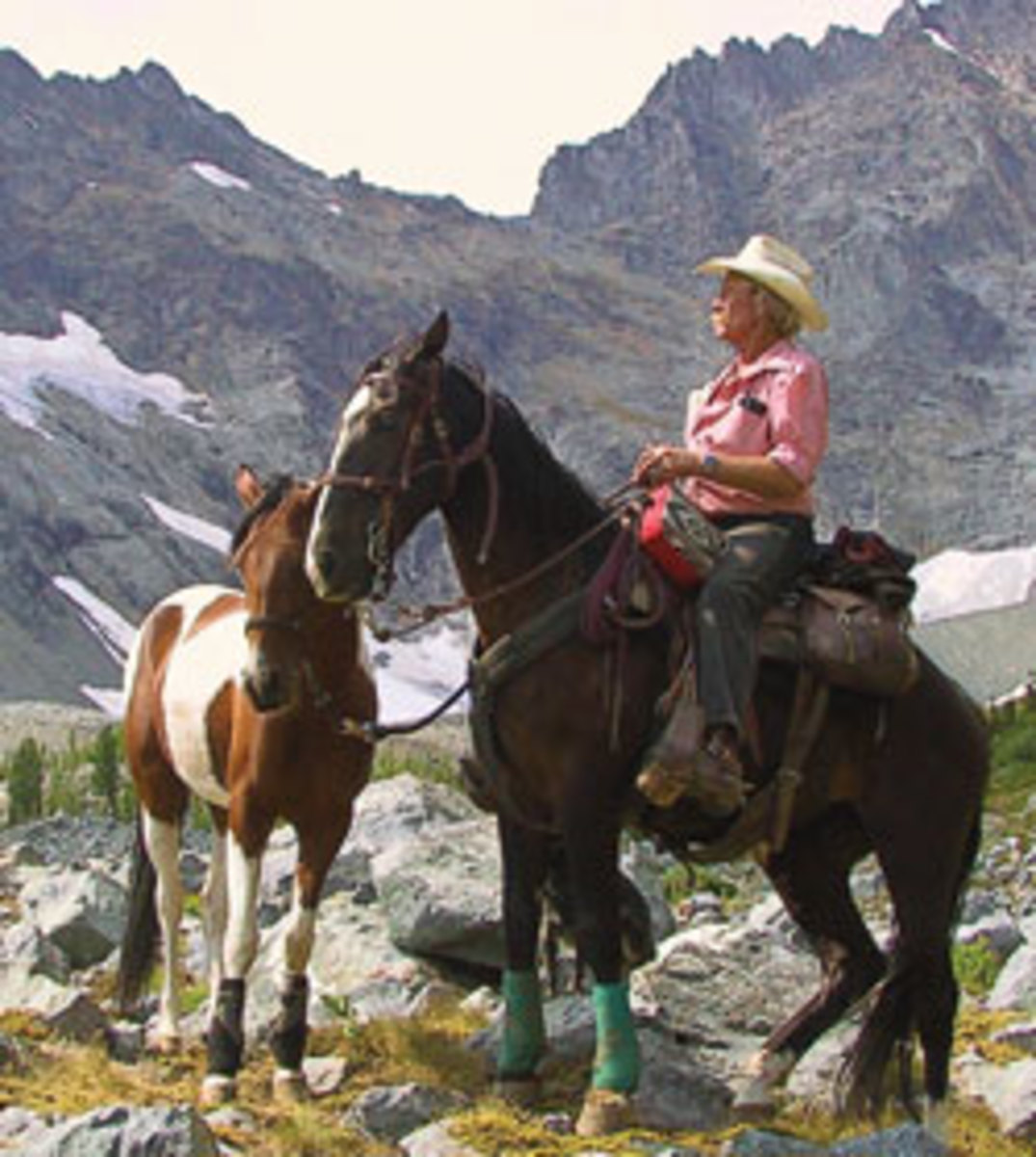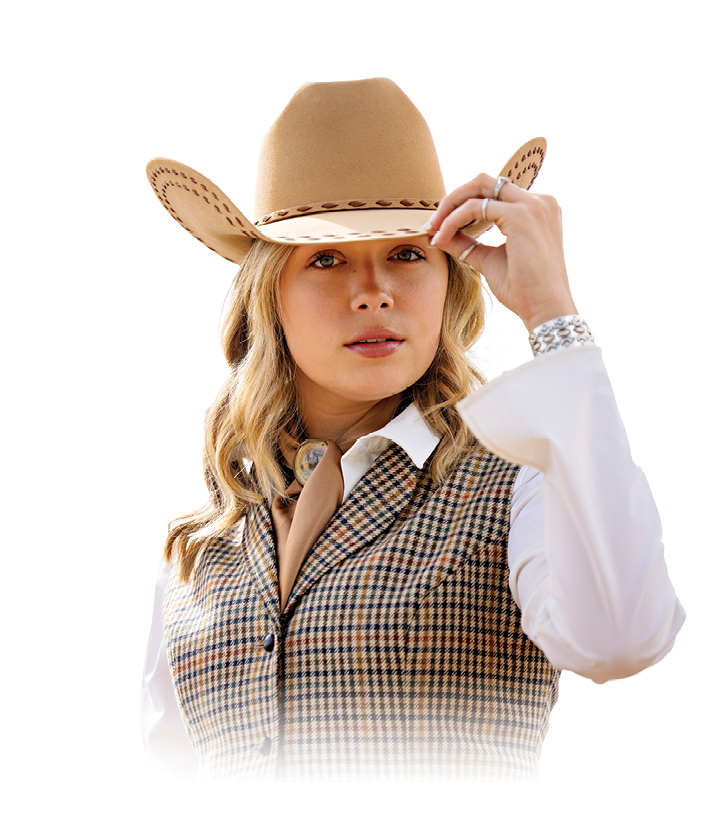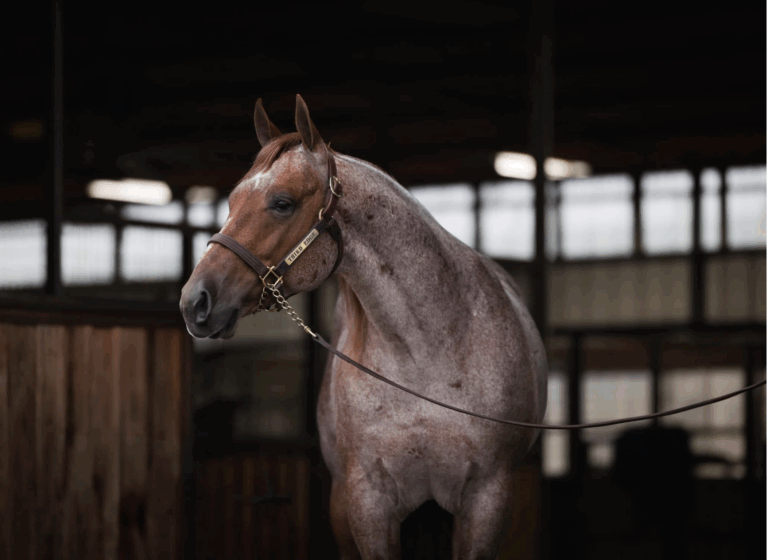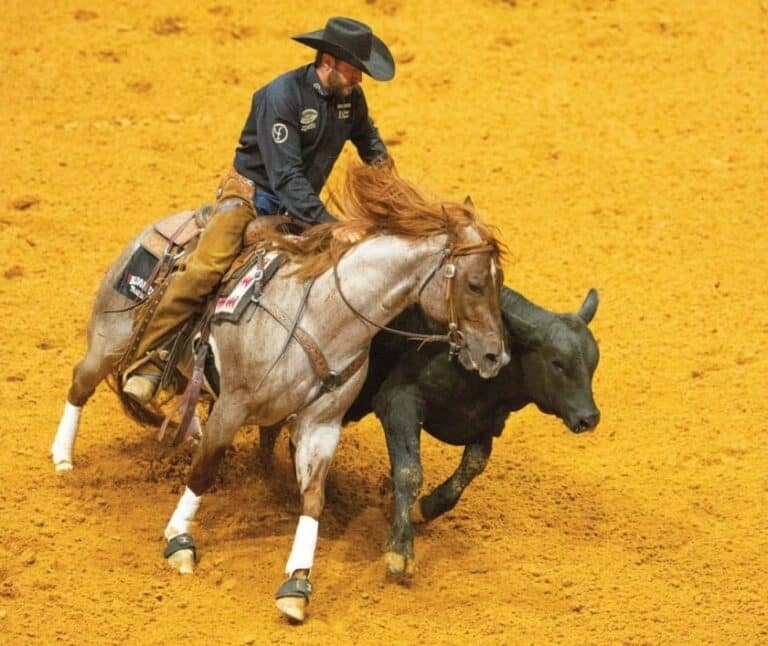
Perhaps you’re ready to switch from a stock horse to a smooth-gaited mount. Or, you’re already a gaited-horse owner, and are thinking of adding a Tennessee Walking Horse to your stable.
Barefoot and plain-shod Walking Horses are sound, sane, smooth, and naturally gaited. This is the ultimate trail horse – both a comfortable mount and a willing, loving companion. But there are several key things you should know before you seal the deal. Here, we give you expert answers to frequently asked questions.
Q: I’m not getting any younger, and my knees are shot. I’m thinking about going gaited. Would you recommend a Tennessee Walking Horse?
A: I have horrible knees, too, so I can relate! Going gaited can be an ideal way to get more saddle time with much less pain. I’d definitely recommend a Walker for comfort, style, intelligence, soundness, beauty, and above all, the sheer niceness of the breed. A good Walker is a genuine family horse: strong, attractive, comfortable, gentle, and a confidence-builder, ready to take care of hubby, Grandma, and the youngest grandchild.
Q: What sets the Walker apart from other gaited breeds?
A: To begin with, there are lots of them. You’ll have many horses to choose from, and you may find your Walker very close to home. No matter what state you live in, there’s probably a Walker breeder or two within driving distance. You’ll be able to make comparisons and decide that you prefer this type of build or that style of movement. And you’re likely to find a good horse that you can afford.
Q: What are the Walker’s gaits like? How do they feel under saddle?
A: Walker gaits feel lovely – to me, anyway – but let me make it very clear that I’m talking about natural gaits, trail gaits, real gaits, not the manmade show gaits that are created with the help of heavy shoes, huge stacks of pads, or soring.
When I say “Walker gaits,” I mean the gaits they’ll exhibit as foals at their mother’s sides, when turned out in pasture, or when under saddle when they’re comfortable and wearing ordinary tack.
Walkers are famous for their flatfoot walk, running walk, and canter, but they can and do offer lots of other gaits, such as the trot, pace, foxtrot, stepping pace, singlefoot, and rack.
Q: On the trail, will I have to ride with other gaited-horse owners, so we go at the same pace?
A: It’s true: Other riders may become frustrated if their horses must trot or canter to keep up with your horse’s walk. Similarly, you and your horse may become frustrated if you have to keep your horse’s stride unnaturally short so that others can keep up.
Or, if your Walker is naturally slow and your trail-riding friends are mounted on speedy, long-strided Thoroughbreds and Appendix Quarter Horses, you might be the one pushing your horse to keep up.
If you always ride with the same trail partners, figure out just how fast their horses go at the various gaits, and make your plans accordingly. If there’s a huge incompatibility, then you’ll be happier if you and trail partners are riding horses with similar gaits.
There doesn’t have to be a problem when you ride a gaited horse alongside or in file with a trotting horse, provided that their gaits have similar speeds. What can create a problem is pushing a horse to a faster speed at a given gait. For example, a Walker, if pushed past his natural running-walk speed, may become pacey – at which point his gait may become too rough for you to enjoy.
Walkers have so many gaits that you can usually find one that’s compatible with another horse’s trail gait. If you’re a baby boomer like me, pay particular attention to how well the horses can stay together at the walk. Other gaits are great fun, but as you get older and have more “ouchy bits,” you’re likely to spend less time riding at speed and more time appreciating conversations and scenery at a slower pace.

Q: Why do I see so many black Walkers?
A: For many years, everyone wanted a black Walker. Other colors existed primarily in foundation stock that wasn’t especially sought after at the time. With many popular black stallions, low stud fees, and artificial insemination, hundreds of black foals were produced every year for many years.
This “black is best” attitude began to change in 1981, when a blue roan stallion, The Pusher, rose to stardom. Today, colors are popular; you can find Walkers in all shades.
Q: I’m ready to buy a Walker. What bloodlines/pedigrees should I look for?
A: Honestly, this is a bit of a trick question. Pedigrees and bloodlines can tell you a lot if you’re a breeder who’s made a lifetime study of the subject; the information will be useful if you’re adding the horse to your breeding program. Otherwise it’s not very useful at all.
For one thing, just about every Walker is going to be advertised as having certain horses in his pedigree (e.g., Midnight Sun, Merry Go Boy). These horses are often so many generations back in the pedigree that it’s rather like me saying to you, “Well my pedigree includes Adam and Eve.” Well, yes, that could be. So what? That doesn’t actually make me different.
Also, as a rider, not a breeder, you need to buy an individual horse based on his ability and suitability, not on his pedigree. There’s an old, wise saying: “You ride the horse, not the papers.”
To find a trail horse, visit reputable breeders who value soundness, durability, smooth gaits, and intelligence – ideally, people who breed Walkers for cattle work and/or trails. Walkers bred for real work are typically strong, kind, intelligent, and sensible. They’re sensitive, but not fizzy-they have both sanity and style.
Q: Are Walkers prone to any conformational flaws, or health/soundness issues?
A: Actually, not so much! Walkers bred for work are typically sturdy and sound, with conformation that’s ideally suited for comfort and durability. Horses bred for show are often leggy, nervous, ultra-animated, and “hot and sensitive.” Look for a strong, calm, secure horse that has benefited from genetics and a good environment, and that has the temperament and movement that you want.
Q: What should I look for in a young horse (under 5)? What about an older horse (over 15)?
A: In a young horse, look for good conformation that will allow him to remain sound into old age; Walkers can be very long-lived. Look for a good attitude – curious and friendly – which indicates a well-bred, well-handled horse that respects humans but doesn’t fear them.
A 2- or 3-year-old Walker may appear narrow, rangy, even ribby, with an oversized head, but realize that he’s still growing. Your Walker won’t be fully mature until age 7 or 8. His basic structure won’t change, but as he matures, his body will fill out and become much more sturdy and solid.
When looking at youngsters, ask the breeder to show you other, similarly bred horses (or their photos) at ages 4, 5, 6, 7, and up.
In an older horse, look for a good basic build and a nice attitude. Look for good training, temperament, responsiveness, and, above all, soundness.
Naturally, you’ll be more forgiving with an older horse – you’ll accept some morning stiffness and minor arthritic changes. But a sound, healthy, 15-year-old Walker in good condition won’t typically look his age, and may well look more like an 8-year-old horse.
Q: Should I get a prepurchase exam? What will it tell me? What won’t it tell me?
A: Absolutely, get a prepurchase exam even if the horse you’re buying costs $1, even if it’s being given to you with a pound of tea, and even if the person giving it to you is your best friend or your own mother! It’s not the initial cost of a horse that gets you, it’s the upkeep, and the upkeep on an injured, ill, or unsound horse can be very high.
Do your best to evaluate the horse based on what you know. If you decide that you want to buy him, schedule a prepurchase examination with a reputable veterinarian to help you make an intelligent, informed decision. (For a list of members of the American Association of Equine Practitioners, visit www.aaep.org.)
A prepurchase exam can tell you if there’s a strong reason not to buy a horse, such as orthopedic issues, heart trouble, bad lungs, blindness, and injuries. An exam can also tell you whether the vet thinks that the horse is capable of doing what you want it to do today. An exam can’t tell you whether the horse will be healthy and sound next year, next month, or an hour from now. The exam will give you information, but the final decision will always be yours.
Q: Is the Spotted Saddle Horse a Walker with an exotic paint job?
A: No, although most Spotted Saddle Horses have at least some Tennessee Walking Horses in their pedigrees. It’s possible to find SSHs that are double-registered as Walking Horses, but many SSH pedigrees also include other breeds such as Standardbreds, Saddlebreds, Missouri Fox Trotters, Kentucky Mountain Horses, and Rocky Mountain Horses. The bold colors and patterns are said to go back to Spanish-American spotted horses.
Q: Are the Spotted Saddle Horse’s gaits similar to the Walker?
A: Like the Tennessee Walking Horse, the SSH typically has a long, easy-moving, ground-covering four-beat gait, and is extremely comfortable to ride. Both move smoothly and easily over terrain. And, since there’s no moment of suspension (when all four feet are off the ground), you’ll experience no bouncing or bumping. Like Walkers, many SSHs will cover more ground at the walk than most other horses will at the trot.
Q: How do I register my Spotted Saddle Horse?
A: The oldest registry is the Spotted Saddle Horse Breeders’ and Exhibitors’ Association, which is member-owned and membership-driven. To be eligible for registration, a horse must have a white spot above the hocks (excluding the face), a non-trotting gait, and one parent registered with the SSHBEA.
To double-register a SSH with the Tennessee Walking Horse Breeders and Exhibitor’s Association, both parents must be registered with the TWHBEA. Two other registries are the National Spotted Saddle Horse Association and the American Spotted Horse Association. The NSSHA dates from 1979. It was formed to establish a uniform, naturally gaited saddle horse that performs without mechanical or chemical abuse. The ASHA was formed in 1999 to promote the sound, naturally gaited, Western-style SSH.




